Karma as destiny and retribution
 The word karma has entered the vocabulary of all the modern languages and has become a household word, but often its meaning is trivialized and distorted due to cultural superimpositions and lack of proper information.
The word karma has entered the vocabulary of all the modern languages and has become a household word, but often its meaning is trivialized and distorted due to cultural superimpositions and lack of proper information.
It is generally used with the meaning of “destiny”, and sometimes “retribution” or punishment.
In Abrahamic ideologies, this destiny is the “lot in life” incomprehensibly and unquestionably assigned by a tyrannical God to each individual at birth, and that must be accepted without discussion and without attempting to improve one’s situation.To this fatalistic interpretation of Destiny, the concept of “karma from the past” (as a consequence of reincarnation) adds the idea that the good or bad actions we performed in previous lifetimes come back to us in the form of reward or punishment, in a sort of “tit for tat” reaction that was also described in some versions of Abrahamic hells (for example, in Dante Alighieri’s Divina Commedia).
A superficial observation of Hindu philosophy, psychology and sociology may create the basic misconception by which the individual does not have any power on his own existence, but simply has to tolerate whatever situation he faces in life.
 `However, a deeper study on the various levels of significance and application of the word “karma”, and its connections with other important concepts (such as dharma, samskara, varna etc) will clarify the misconceptions and open the door to a storehouse of realizations that can really help the contemporary researchers to solve the many problems of today’s life, at a global level.The Sanskrit word karma stems from the root kr, which means, “to do”, “to take action”.
`However, a deeper study on the various levels of significance and application of the word “karma”, and its connections with other important concepts (such as dharma, samskara, varna etc) will clarify the misconceptions and open the door to a storehouse of realizations that can really help the contemporary researchers to solve the many problems of today’s life, at a global level.The Sanskrit word karma stems from the root kr, which means, “to do”, “to take action”.
Therefore, it means “action”. In a wider sense, it is also used to indicate “reaction” and “connection between action and reaction”.These three are actually very strictly connected: according to the universal laws of the universe, each action is followed by an equal reaction in the opposite direction. What goes around, comes around.This applies to the movements of gross physical bodies in the environment but also to the subtler facts and their consequences which may be observed after a very long time, or under different forms.
For example, if we consciously and unnecessarily kill someone, sooner or later we will have to die a violent death to “pay” for our karmic “debt”. The action we initiated must attain completion before dissolution. It is not a punishment but a compensation, a re-balancing of the cosmic energies that were disturbed by our non-harmonic actions.
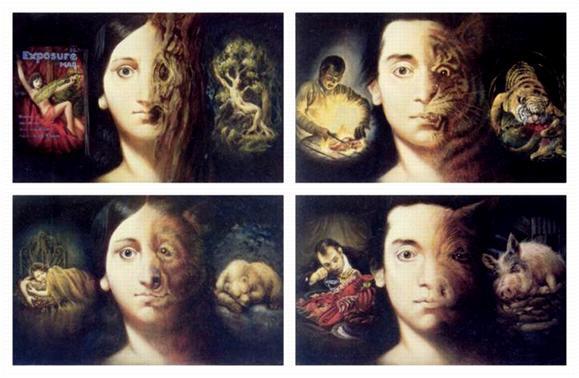 Maybe the killer will be killed by the victim’s relatives or executed after a trial, but he can also “get away with it” and then become a victim of an “accident” in this lifetime or in the next.The purpose of the mechanism is teaching us how to live in a proper way, because in order to deeply understand the meaning of a violent death we have to go through exactly the same experience, and the Supreme Witness who constantly resides within us guides us to our date with “destiny” (usually, without out conscious knowledge) where we will learn that particular lesson.
Maybe the killer will be killed by the victim’s relatives or executed after a trial, but he can also “get away with it” and then become a victim of an “accident” in this lifetime or in the next.The purpose of the mechanism is teaching us how to live in a proper way, because in order to deeply understand the meaning of a violent death we have to go through exactly the same experience, and the Supreme Witness who constantly resides within us guides us to our date with “destiny” (usually, without out conscious knowledge) where we will learn that particular lesson.
Now, just like in the “bank account” of Karma there are debts to pay, we also have credits to cash. Good merits or credits (punya) earned by executing good deeds, charity and genuinely religious (dharmic) activities, are so many deposits on our account and will mature in due time, even if we do not remember them.
For this reason pleasures and sufferings, compared here to credits and debits we daily find in our account, have roots in good (punya) or evil (papa) activities we performed in the past.Actually there is no injustice, nothing happens “by chance”: life and destiny follow a scientific law of perfect justice which, once we understand it, will help us get free from all ties and even to close the account once and for all.In fact, the proper understanding of the laws of karma and reincarnation give the greatest power to the individual on his/ her own life, facilitating a sense of responsibility and a greater awareness about the consequences of each action we are contemplating.Every individual is truly the master of his/ her own destiny: by a careful and well-informed series of choices, anyone can improve his/ her own life by creating good karma and neutralizing bad karma.
How to change one’s karma
 The first thing to do is to accept responsibility for our past actions, and be willing to pay the price.This means that we need to soberly accept all the joys and sufferings which always come every day, without trying to solve our problems by evil activities.We can certainly work to solve problems but we should always remain within the boundaries of dharma (ethical behavior). The proper actions will help us improve our credit and neutralize our debts, while improper actions will have exactly the opposite effect.When we are in deep and troubled waters, the greatest danger is panicking and floundering about without a clear vision of reality: this may prompt us to commit actions that are actually against dharma, thereby creating more negative reactions for the future.
The first thing to do is to accept responsibility for our past actions, and be willing to pay the price.This means that we need to soberly accept all the joys and sufferings which always come every day, without trying to solve our problems by evil activities.We can certainly work to solve problems but we should always remain within the boundaries of dharma (ethical behavior). The proper actions will help us improve our credit and neutralize our debts, while improper actions will have exactly the opposite effect.When we are in deep and troubled waters, the greatest danger is panicking and floundering about without a clear vision of reality: this may prompt us to commit actions that are actually against dharma, thereby creating more negative reactions for the future.
Secondly, we must act in a detached way, out of duty, always doing what is good and beneficial for ourselves and for others; in this way we will accumulate merits which allow us to meet our daily karmic “expenditures” until the moment we leave this body.Actually, as long as we have a material body we need to “spend”, i.e. to enjoy or consume a minimum amount of pleasure and benefits which are necessary for our bodily and mental health.
After the “rental period” of this body is over, we can close our “karmic account” and be freed from its responsibilities by simply renouncing our remaining accrued merits and offering them for the benefit of others.
Karmic credits allow us to get wealth, beauty, intelligence, fortune, fame, strength, health, self-control and so on. It is very important to note that karmic credits we build today can also be cashed in this very life, as karma is simply “action” and not necessarily “action from a previous birth”.By sincere work, determination and intelligent efforts, and by avoiding making “new debts” we can improve the situation of our “karmic account” even in a very short time.Therefore, karma is not just an inevitable sentence we simply need to storm out in a passive and fatalistic way.
Our karma is constantly changing with each action (or inaction) of ours, and can even be neutralized or overcome completely by new and suitable actions; as people usually want to get rid of the “bad karma” (and don’t mind having some “good karma”).
 The Hindu scriptures and Tradition recommend pious activities such as sacred rituals of purification (prayaschitta), worshiping God, going to pilgrimage, bathing in sacred tirthas, distributing charity to deserving persons, selflessly performing good deeds for the benefit of all and sacrificing one’s possessions for good causes, engaging in austerities (such as fasting etc), or simply renouncing one’s material identification and attachments.
The Hindu scriptures and Tradition recommend pious activities such as sacred rituals of purification (prayaschitta), worshiping God, going to pilgrimage, bathing in sacred tirthas, distributing charity to deserving persons, selflessly performing good deeds for the benefit of all and sacrificing one’s possessions for good causes, engaging in austerities (such as fasting etc), or simply renouncing one’s material identification and attachments.
All these activities are strongly recommended for everyone, because in the normal course of life each individual inevitably incurs into some form of negative activity, and therefore “produces bad karma”.
 Those who are interested in accruing “good karma”, and thus qualifying for a better position and a happier material life, should not only engage in pious religious activities as listed above (to atone for their past wrong actions) but should also carefully perform their social, familiar and religious duties according to their guna and karma – in other words, their sva dharma, fulfilling their specific function within the world.
Those who are interested in accruing “good karma”, and thus qualifying for a better position and a happier material life, should not only engage in pious religious activities as listed above (to atone for their past wrong actions) but should also carefully perform their social, familiar and religious duties according to their guna and karma – in other words, their sva dharma, fulfilling their specific function within the world.
The results of past deeds supply the nourishment for the body and maintain the duration of life; this means that when karmic reactions which caused that body are finished, also life in that body terminates, in some way or another.Without karma, the body has no more reason to exist. The results of past deeds are joy and suffering, needed to complete our karmic mission, learn the different lessons and finally attain liberation.
So in this sense, the best definition of karma is given in Bhagavad gita (8.3): bhuta-bhavodbhava-karo visargah karma-samjnitah, “Karma is the activity performed for the development of the material body”.
Karma as duty
More precisely, karma can be distinguished into karma proper (or “prescribed action”) and vikarma or “bad action” (the action that is contrary to the prescription of the shastra).
According to the shastra (Gita 18.42-44), the karma (duty, or sva-dharma) for most qualified and most respectable members of society, the brahmanas, is described as follows: samo damas tapah saucham kshantir arjavam eva cha, jnanam vijnanam astikyam brahma-karma svabhava-jam
“Peacefulness, self-control, austerity and simplicity, purity and cleanliness, tolerance, honesty and truthfulness, wisdom, love for knowledge and religiousness, are determined by the personal nature of the brahmanas (intellectuals and teachers)”.
If a person is unable to truly develop these qualities because of a different nature, rather than trying to impose oneself artificially for a position we cannot hold, it is better to find a more appropriate and useful position in society.The karma (duty, or sva-dharma) of a kshatriya is heroism, powerful strength, determination, resourcefulness, courage especially in battle, generosity and tendency to leadership: sauryam tejo dhritir dakshyam yuddhe chapy apalayanam, danam isvara-bhavas cha kshatram karma svabhava-jam.
 A person who does not possess these talents but wants to progress and improve can take the position of a vaisya and practice the qualities of responsibility and self-sacrifice in an easier way, while a person who is totally unable to even take care of himself and needs to depend on others for a salary should humbly accept the position of sudra: krishi go-rakshya vinjyam vaisya krma svabhava-jam, paricharyatmakam karma sudrasyapi svabhava-jam, “The karma (duty, or sva-dharma) of a vaisya consists in cultivating the land, protecting the cows, engaging in trade and business, while the sudra is only able to serve and assist others.”
A person who does not possess these talents but wants to progress and improve can take the position of a vaisya and practice the qualities of responsibility and self-sacrifice in an easier way, while a person who is totally unable to even take care of himself and needs to depend on others for a salary should humbly accept the position of sudra: krishi go-rakshya vinjyam vaisya krma svabhava-jam, paricharyatmakam karma sudrasyapi svabhava-jam, “The karma (duty, or sva-dharma) of a vaisya consists in cultivating the land, protecting the cows, engaging in trade and business, while the sudra is only able to serve and assist others.”
Contrarily to what some people may think, the life and duties of a sudra are much easier than the life and duties of the other occupational classes, because a sudra is not expected to be responsible, austere, clean and pure, or to make great efforts to get a higher education in which he has no interest.Those who employ the sudras as their servants have the stringent duty and responsibility to take care of all their needs and maintain them properly even when they become sick or old and unable to work, as well as to take proper care of the servants’ families.
A sudra can also become relatively self-sufficient by making a career of some manual ability he possesses – such as hair-styling, tailoring, panting, sculpting, singing, dancing etc. However, he still remains a sudra if he depends on others who hire and pay him for his physical services.
 In Vedic times all children were sent to the gurukula, the “family of the Guru”, a special kind of school where a qualified teacher would take responsibility of shaping the moral character of the students and not simply fill their brains with stereotyped information. The Guru observed all the children carefully and tested them to ascertain their actual natural tendencies, and instructed and trained them accordingly, so each individual student would be able to develop fully in a progressive way.
In Vedic times all children were sent to the gurukula, the “family of the Guru”, a special kind of school where a qualified teacher would take responsibility of shaping the moral character of the students and not simply fill their brains with stereotyped information. The Guru observed all the children carefully and tested them to ascertain their actual natural tendencies, and instructed and trained them accordingly, so each individual student would be able to develop fully in a progressive way.
Thus the Guru’s evaluation about the guna and karma of the student was more important than the rank of the family in which the student was born: those who were born in families of brahmanas and kshatriyas but did not have the qualities or tendencies to perform such duties were commonly called brahma bandhu and kshatra bandhu respectively, meaning “relative of brahmanas” and “relative of kshatriyas”.
We can give the example of a child born in a family of physicians or surgeons: if the child does not have the required intelligence, ability or talents, or he is not interested in pursuing the career of his parents for whatever reason, trying to force him into that direction or artificially recognizing him as automatically qualified to perform surgeries, diagnose diseases etc, even without going through proper schooling, training and verification of the actual knowledge and abilities, would be criminally dangerous for the entire society and even prevent any genuine progress of the individual concerned.
The progress through the varna system
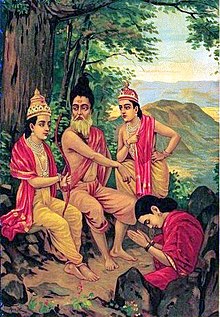 In Vedic stories we also find several examples of people changing their varna dharma even within one lifetime due to change of circumstances, i.e. the development of qualities and tendencies by association and practice. Visvamitra, for example, was welcomed as a brahma rishi by the great authority Vasistha due to his dedication to developing the required qualities and activities. Satyakama Jabala was recognized as a brahmana by his Guru because of his great truthfulness (as described in Chandogya Upanishad), Karna was made a kshatriya by Duryodhana although he was considered son of a sudra (a chariot driver), and Valmiki was born in a family of hunters and robbers but he became a great brahmana and Rishi.
In Vedic stories we also find several examples of people changing their varna dharma even within one lifetime due to change of circumstances, i.e. the development of qualities and tendencies by association and practice. Visvamitra, for example, was welcomed as a brahma rishi by the great authority Vasistha due to his dedication to developing the required qualities and activities. Satyakama Jabala was recognized as a brahmana by his Guru because of his great truthfulness (as described in Chandogya Upanishad), Karna was made a kshatriya by Duryodhana although he was considered son of a sudra (a chariot driver), and Valmiki was born in a family of hunters and robbers but he became a great brahmana and Rishi.
The greatest authority on Vedic knowledge, the compiler of the Vedas himself, Veda Vyasa, who although born from a fisherwoman (Satyavati) without a conventional marriage, he is considered the greatest brahmana and begot illustrious kshatriyas such as Pandu, the father of the Pandavas.
It is normally accepted by Hindu social standards that a brahmana can fall down and become an outcaste, or any member of the caste system can lose or give up his dharma when they cease to follow the rules and regulations prescribed by Vedic tradition. In Kali yuga the tendency is to “fall down” or to become degraded, but the path of human progress is to change dharma in an ascending process of evolution and purification, and this is indeed what we should do.
By developing the proper qualities and activities, and by exposing ourselves to the appropriate association and experience, our karma can and must change for the better.In fact, the entire Vedic system is a progressive path, intended to facilitate the evolution of the individual from a lower level to a higher level – from ignorance to knowledge, from darkness to light.
This can be done gradually through the karma kanda path, consisting of samskaras (activities for purification and elevation of consciousness) or even suddenly by a special blessing of God or the Guru.Some people judge the dharma of an individual by considering his/her birth in a particular family as if intellectual, religious and ethical qualifications were merely determined by genetic DNA, but this is not a fact.
Birth in a good family can help because of the favorable atmosphere, the immediate availability of theoretical and practical knowledge, and a training that starts even before birth with the proper performance of the prescribed samskaras, but if by any chance the performance of the samskaras has been neglected or faulty, and if the level of consciousness of the family members has fallen to a lower level, even this advantage is lost.
According to the dharma shastra, one needs to show his qualifications and regularly engage in the suitable actions, and to be officially recognized by a qualified Guru with the proper process of diksha before he can consider himself a member of the higher classes of society, i.e. brahmana, kshatriya or vaisya.By birth, everyone in Kali yuga is a sudra, and anyone (including those born in high class families) can attain a higher position than sudra only through training with sufficient training from proper authorities and the refinement of one’s character by the performance of samksaras.
The training and the purificatory rituals vary according to the individual’s guna and karma (talents and inclinations) manifested spontaneously due to the prarabdha karma.Therefore each individual child at the gurukula is trained in a personalized way according to his actual potential and talents.
 A student that manifests a strong interest for study and intellectual pursuits, for physical and metaphysical sciences, for debate and research, and for experimentation in consciousness will be trained as brahmana.
A student that manifests a strong interest for study and intellectual pursuits, for physical and metaphysical sciences, for debate and research, and for experimentation in consciousness will be trained as brahmana.
The usual period for such training is 20 years.A student that manifests kshatriya qualities – leadership, fearlessness, resourcefulness, hard work, determination, strategical thinking, etc – will be trained as a warrior and administrator, and the training period is usually 15 years.Those students that do not have such talents, but are responsible enough to take care of themselves and manage wealth, are trained as vaisyas, usually for a total of 10 years.
The others, who only had manual talents, were trained as sudras, with a basic religious and ethical formation that had no specific requirements. Those who had no talent at all were trained as servants.
Later in life, a member of this lowest class of sudras can always rise to the level of vaisya by becoming a businessman, or in other words learning to develop organizational and vending skills, putting up a shop or enterprise and employing workers, storing products and arranging for sales promotion, etc. The motivation for such progress could be the desire for a better life, or the inspiration received from the example of more qualified persons.
Similarly, a vaisya who has become expert in managing his land and cattle and is able to responsibly manage his farm hands, can further qualify for progressing to the kshatriya level, and a kshatriya who aspires to become more religiously inclined, or to teach others, can further qualify for progressing to the brahmana level.Usually each varna has provisions for several levels of personal progress where each individual can still feel satisfied and be useful to society, but in special cases a person who is truly qualified for a higher occupation can be recognized as such by the King, the Guru or the assembly for the brahmanas, who can equally “elevate” the social position of an individual if better qualified, and “downgrade” it if the individual has demonstrated to lack the necessary qualifications for the position he occupies.
The stages of development of karmic reactions
As we have seen, the concept of karma connects the factors of action, reaction, duty, and nature of the individual, as the habitual or spontaneous behavior structure that is built by the repetition of some particular actions and choices.
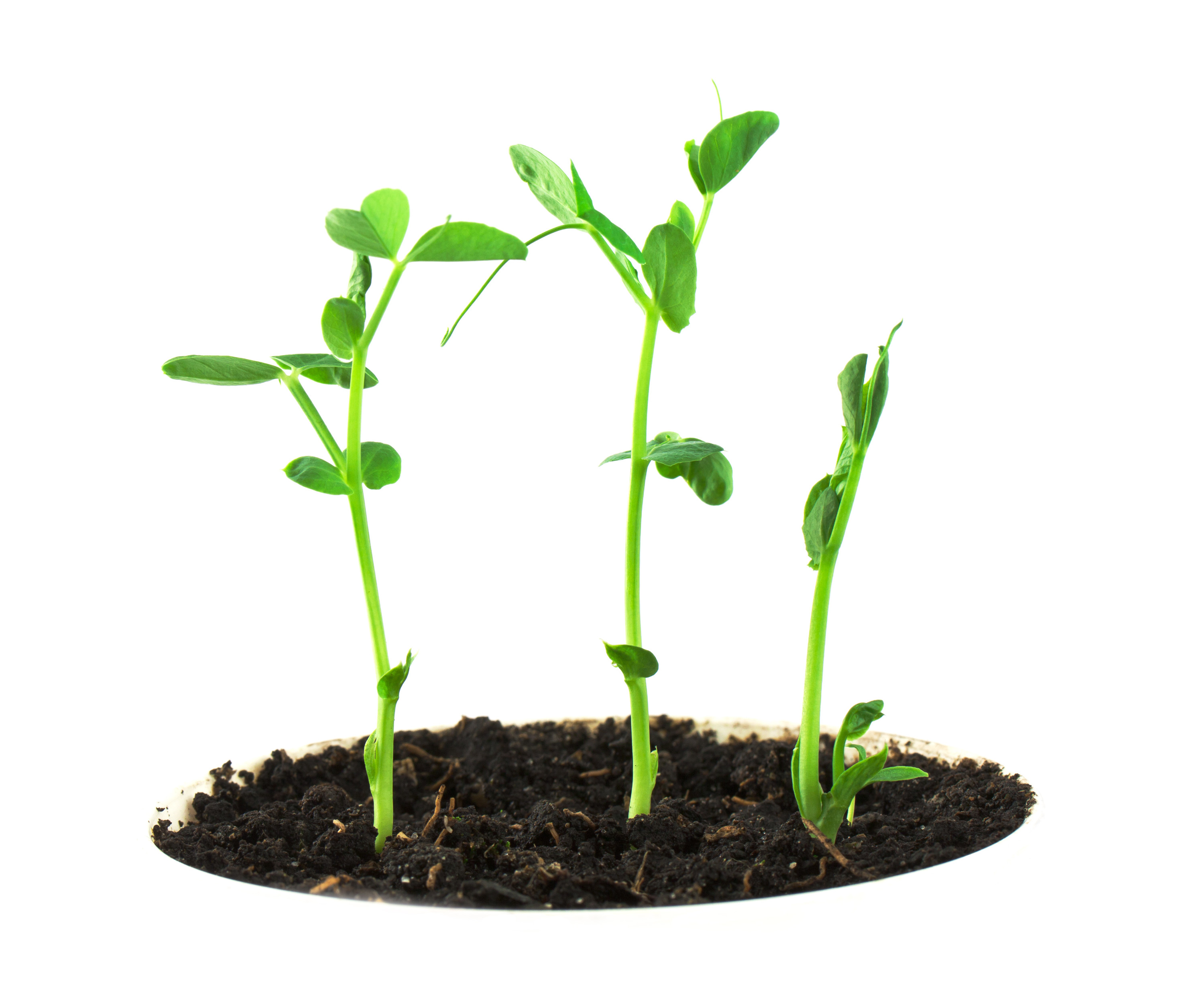 In this perspective, we can compare them to a plant.
In this perspective, we can compare them to a plant.
* The plant that has already sprouted from the seed, but has not produced fruits yet is called sanchita, which means “accumulated”. It refers to the causal body or karmic body that contains all the karmic reactions; they are also called kuta (“established”).
They can be destroyed more quickly by bhakti and spiritual knowledge, and more slowly and with more difficulty, by prayascitta (“atonement”) and punya (“meritorious actions”).
The sanchita is the karmic tree that continues to exist lifetime after lifetime, as long as one remains in the material world; it can produce fruits or not, according to the circumstances.
To make another example, the sanchita karma is the “karmic bank account”.
* The fruits of the fully grown plant are called prarabdha. The definition refers to the reactions of activities of previous lifetimes, that have already fructified into the present material body, life circumstances, nature tendencies, etc.
They cannot be destroyed because they have already manifested; they must be tolerated and can be modified only partially by hard work.
 Astrology is based on the analysis of the prarabdha karma only.To make the bank example, the prarabdha karma is your account balance – positive or negative.
Astrology is based on the analysis of the prarabdha karma only.To make the bank example, the prarabdha karma is your account balance – positive or negative.
* The seeds produced by the fruits are called vartamana (or kriyamana). The definitions refer to the reactions to the activities that we are performing NOW, in this present lifetime, and that have not developed yet. And maybe will not develop at all, if we “cook” them through the process of bhakti and vidya.
The karmic seeds can be destroyed very easily, because each day we can change our choices, and habits formed recently can be changed quickly.To continue with the bank example, the vartamana karma consists of your present money movements – payments, money receipts, etc. It is rather easy to stop a cheque or to delay a payment or to cancel a credit card, but if you do not take proper care of the movements, after some time the bank will start charging you negative interests.
The agami karma consists of that sanchita karma that has not manifested yet in the form of fruits, but is going to (phalonmukha (“towards fructifying”) in the near future.
To continue with the bank example, it is the bunch of post-dated cheques and payment orders that have been circulating already for some time, but were delayed due to some circumstances; for example, like the phone bills and electricity bills that come at some point of the month.As you know, you already have a debt with the phone or electricity company even before you receive your bill. If you do not pay it within a certain date, your bank will debit it to your account anyway.
Actions beyond the material level
 Karma as “action” also applies to the various levels defined as saririka (physical), vacika (verbal)and bauddhika (mental).However, each level has a different degree of consequence.Actions by mind have less consequences than actions by speech, and actions by speech are less serious than actions by body. This is common sense.The point is the amount of damage that you can do to others: this is what determines the seriousness of your bad karma.On the “positive” side, though, and especially on the spiritual side, mental actions are considered as valid as verbal and physical actions. This is a special facility allowed in Kali yuga.
Karma as “action” also applies to the various levels defined as saririka (physical), vacika (verbal)and bauddhika (mental).However, each level has a different degree of consequence.Actions by mind have less consequences than actions by speech, and actions by speech are less serious than actions by body. This is common sense.The point is the amount of damage that you can do to others: this is what determines the seriousness of your bad karma.On the “positive” side, though, and especially on the spiritual side, mental actions are considered as valid as verbal and physical actions. This is a special facility allowed in Kali yuga.
The process of action develops from the level of the mind, then appears at the level of words, and then materializes at the level of body.If a person is intelligent, s/he should watch his/her thoughts, because when we cultivate thoughts of a certain kind, words will appear in our mind and become expression (conscious or unconscious), and from the words (the type of expression), the physical actions will follow.If we control (i.e. observe) our mind processes, we should be able to catch the negative mental patterns and modify them before they solidify in action.
This applies both to material actions and to spiritual actions.The difference between material action and spiritual action is the consciousness: a material action is performed in the material consciousness of identification and attachment to matter, while the spiritual action is performed in the spiritual consciousness or the divine consciousness.
The Vedic method of progressive evolution prescribes a system of duties or recommended actions (karma) for each particular step of the individual’s journey.In the first stages of such journey, the Vedas present ritualistic ceremonies and occupational activities meant to elevate the level of consciousness of the individual and the collective social body.
For practical purposes, in these activities there must be a subject that performs the action. This specific position is called karta, “the doer”.
But who is the “doer”?
 Now, according to the Vedic theological system, the definition of Purusha (the male principle) applies both to the Supreme Consciousness (brahman, paramatma, bhagavan) and to the individual consciousness (atman, jivatman).The counterpart of this male principle is called Prakriti (nature, the feminine principle), that applies both to the spiritual energy (para shakti) and to the material energy (apara shakti).Contrarily to what many people may think, the Purusha (Shiva) is active only through the agency of the Prakriti (Shakti).
Now, according to the Vedic theological system, the definition of Purusha (the male principle) applies both to the Supreme Consciousness (brahman, paramatma, bhagavan) and to the individual consciousness (atman, jivatman).The counterpart of this male principle is called Prakriti (nature, the feminine principle), that applies both to the spiritual energy (para shakti) and to the material energy (apara shakti).Contrarily to what many people may think, the Purusha (Shiva) is active only through the agency of the Prakriti (Shakti).
Therefore the action in itself is not performed by the Purusha, but by the Prakriti, as confirmed in Bhagavad gita (3.27): prakriteh kriyamanani gunaih karmani sarvasah, ahankara-vimudhatma kartaham iti manyate, “All activities are (actually) performed by the qualities of nature, but a foolish person who is confused by egotism thinks ‘I am doing’.”
For this reason, the genuine realization of spiritual knowledge – our real identity as pure Consciousness – burns away all the karmic reactions, because the identification as the “doer” is destroyed.Without a “doer” there is no karma, and therefore no karmic reaction.Technically, this type of action based on the spiritual consciousness is called akarma, or “non-action”.
This does not mean that a person remains idle and does not do anything, because the choice of abstaining from action is also considered karma or vikarma.When one abstains from prohibited action, this inaction is called karma, while when one abstains from dutiful action, this inaction is called vikarma.
What is akarma then?
It is the selfless action (or abstention from action) that is motivated by duty only, without any personal attachment or identification.
The origin of karma
I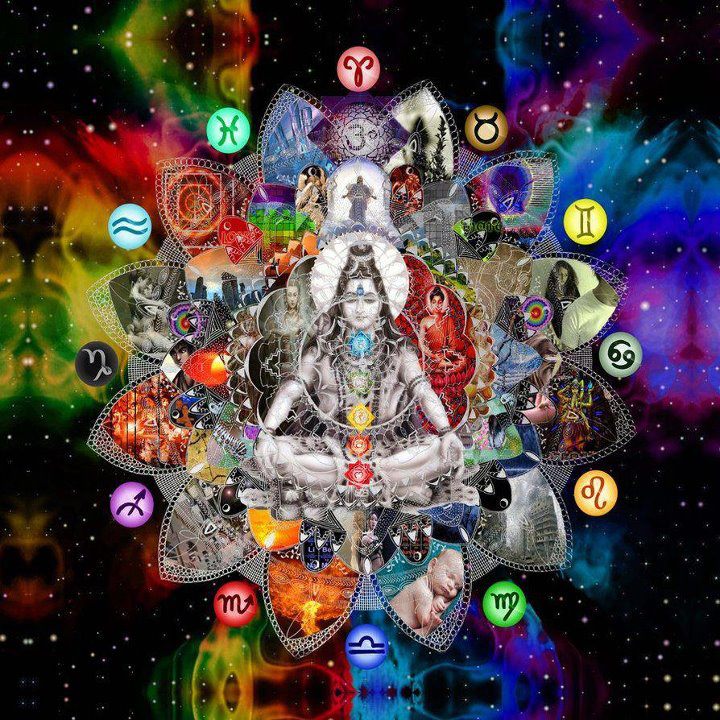 f the material body of the individual being is created by the reactions of previous activities, one may legitimately ask how the first body of the individual is created in the beginning, before he had any opportunity to perform activities and thus produce karmic reactions.The answer lies in the atomic nature of the non-developed individual soul.
f the material body of the individual being is created by the reactions of previous activities, one may legitimately ask how the first body of the individual is created in the beginning, before he had any opportunity to perform activities and thus produce karmic reactions.The answer lies in the atomic nature of the non-developed individual soul.
The anu atma (atomic soul) is created as a living cell in the spiritual body of the Virat Purusha (the universal body), and as such it possesses (in very small quantity) the same characteristics of the universal Purusha.These qualities are: eternal existence (sat), inherent happiness (ananda), and unlimited knowledge or consciousness (cit).
The natural process for the development of the atomic soul is comparable to the development of the material body through the process of birth.The living cell in its original form is tiny and not independent, but by remaining connected to the source, it naturally develops according to a pre-determined process.At some point, when the individual being has matured enough, it obtains the opportunity of the human life – which is a sort of a graduation test because it offers the power of choice and a certain measure of independence.
Before the first opportunity of the human life, there is no creation of karma because the non-human body/mind strictly follows the laws of nature by instinct. This applies both for the lower species of life (below the humans, such as animals and plants) and for the higher species of life (above the humans, such as Devas etc).When the jivatma obtains the human form of life (manusya jati), it gets the first opportunity for liberation (moksha) from the cycle of material incarnation (samsara).
I n Satya yuga, simple meditation (yoga) is sufficient to achieve the consciousness of the atman/brahman, that is the actual spiritual identity of the living entity. By contemplating its spiritual identity and the sum total of the spiritual existence (brahman/paramatma/bhagavan), the jivatma natural develops its spiritual body and becomes independent and liberated.
n Satya yuga, simple meditation (yoga) is sufficient to achieve the consciousness of the atman/brahman, that is the actual spiritual identity of the living entity. By contemplating its spiritual identity and the sum total of the spiritual existence (brahman/paramatma/bhagavan), the jivatma natural develops its spiritual body and becomes independent and liberated.
However, the process of yoga requires a very long practice when it is not supported by other means, so it can only be applied in an exclusive way during the Satya yuga.
In Satya yuga all the human beings are perfectly qualified as brahmanas, and there is very little need for practical work. The gradual passage from Satya to Treta brings a gradual decrease in the advantages and qualities of people, so while initially it was normal for everybody to live on pranic energy only, the desire for sense gratification pushes the mind towards the taste of sattvic foods that have a less subtle substance, such as fruits, milk, nuts, and other ingredients that the earth and the cows can give spontaneously.
The majority of the people still automatically achieve moksha during one single lifetime, which lasts a great number of years; however those who were unable to develop completely take another birth, as human beings, Pitris or Devas. Still, there is no bad karma because everyone spontaneously follows the natural dharmic way.
I n Treta yuga people become more greedy and starts desiring food grains, vegetables, herbs, and other ingredients. Thus the general population of the planet becomes divided into 3 varnas, as vaisyas are required for the production of the food grains and the protection of the cows, the storage of goods etc. However, in the process of cultivating the land some bad karma is created, because small animals are damaged, therefore the yuga dharma is established as the pancha maha yajna, or the sacred ritualistic action of offering food and honor to the Devas and other beings, to form a direct connection of cooperation and kinship. Previously, the yajna consisted only in the meditation, but in Treta yuga the yajna becomes a ritualistic ceremony centered on the offering of food.
n Treta yuga people become more greedy and starts desiring food grains, vegetables, herbs, and other ingredients. Thus the general population of the planet becomes divided into 3 varnas, as vaisyas are required for the production of the food grains and the protection of the cows, the storage of goods etc. However, in the process of cultivating the land some bad karma is created, because small animals are damaged, therefore the yuga dharma is established as the pancha maha yajna, or the sacred ritualistic action of offering food and honor to the Devas and other beings, to form a direct connection of cooperation and kinship. Previously, the yajna consisted only in the meditation, but in Treta yuga the yajna becomes a ritualistic ceremony centered on the offering of food.
This is the time when the hymns of the Vedic samhitas are composed; previously there was no need to worship the Devas externally because in the Yoga process one contemplates all the Devas within oneself.
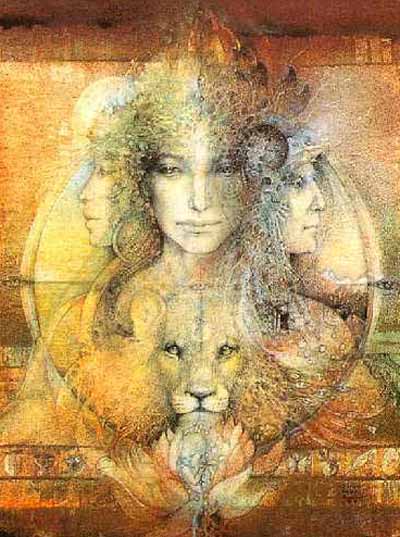 Still, for those who follow the system faithfully, there is no accumulation of negative karmic reactions, therefore there is no concern for reincarnation as we know it today. The majority of people in Treta yuga achieve success through the yuga dharma and obtained moksha, moving either through the Deva ayana or the Pitri ayana described in Bhagavad gita. Both courses take the individual soul on a higher plane, from which the jivatman will have the opportunity to achieve moksha or to return to earth for another human birth.In Dvapara yuga things become more complicated and difficult: people live shorter lives, so the practice of yoga must be adapted to the new circumstances and supported by the daily offerings to the fire for the Devas and the Pitris, and by the worship to the Deity of Bhagavan through the simplification of the yajna rituals into the 16 upachara method. The brahmanas become an occupational class that works for the upliftment of the rest of the population (rather than the natural perfection of human life open to all individuals). Society becomes divided into the four varnas as we know them, and the character of the human beings starts to deteriorate; we find that people not only need to take further births, but such births can be even lower than the human level, due to the accumulation of bad karmic reactions.
Still, for those who follow the system faithfully, there is no accumulation of negative karmic reactions, therefore there is no concern for reincarnation as we know it today. The majority of people in Treta yuga achieve success through the yuga dharma and obtained moksha, moving either through the Deva ayana or the Pitri ayana described in Bhagavad gita. Both courses take the individual soul on a higher plane, from which the jivatman will have the opportunity to achieve moksha or to return to earth for another human birth.In Dvapara yuga things become more complicated and difficult: people live shorter lives, so the practice of yoga must be adapted to the new circumstances and supported by the daily offerings to the fire for the Devas and the Pitris, and by the worship to the Deity of Bhagavan through the simplification of the yajna rituals into the 16 upachara method. The brahmanas become an occupational class that works for the upliftment of the rest of the population (rather than the natural perfection of human life open to all individuals). Society becomes divided into the four varnas as we know them, and the character of the human beings starts to deteriorate; we find that people not only need to take further births, but such births can be even lower than the human level, due to the accumulation of bad karmic reactions.
In Kali yuga, the yuga dharma is the sankirtana, or the discussion of the spiritual subjects and the japa, the recitation of the Names of God; the practice of yoga, yajna and archana (Deity worship) is usually faulty and insufficient to achieve moksha and must be supported by the easy process of japa and sankirtana. People need to take several births to develop to a level of sufficient spiritual realization, and the karmic luggage becomes increasingly heavier.
It is important to understand that the four yugas follow each other in a cyclic way, so all the religious practices are eternal – yoga, yajna, archana and japa.Similarly, all the religious/ spiritual knowledge is eternal: the Vedic scriptures are simply compiled from time to time in the form that is most suitable for the age.
The Vedic tradition clearly rejects the academic idea of an “evolution” of Knowledge along a linear time process, therefore we do not entertain the idea that some scriptures were written “for the first time” in a particular historical period, or that a certain level of knowledge or certain concepts were created “for the first time” one after the other within the last 5000 years.






























